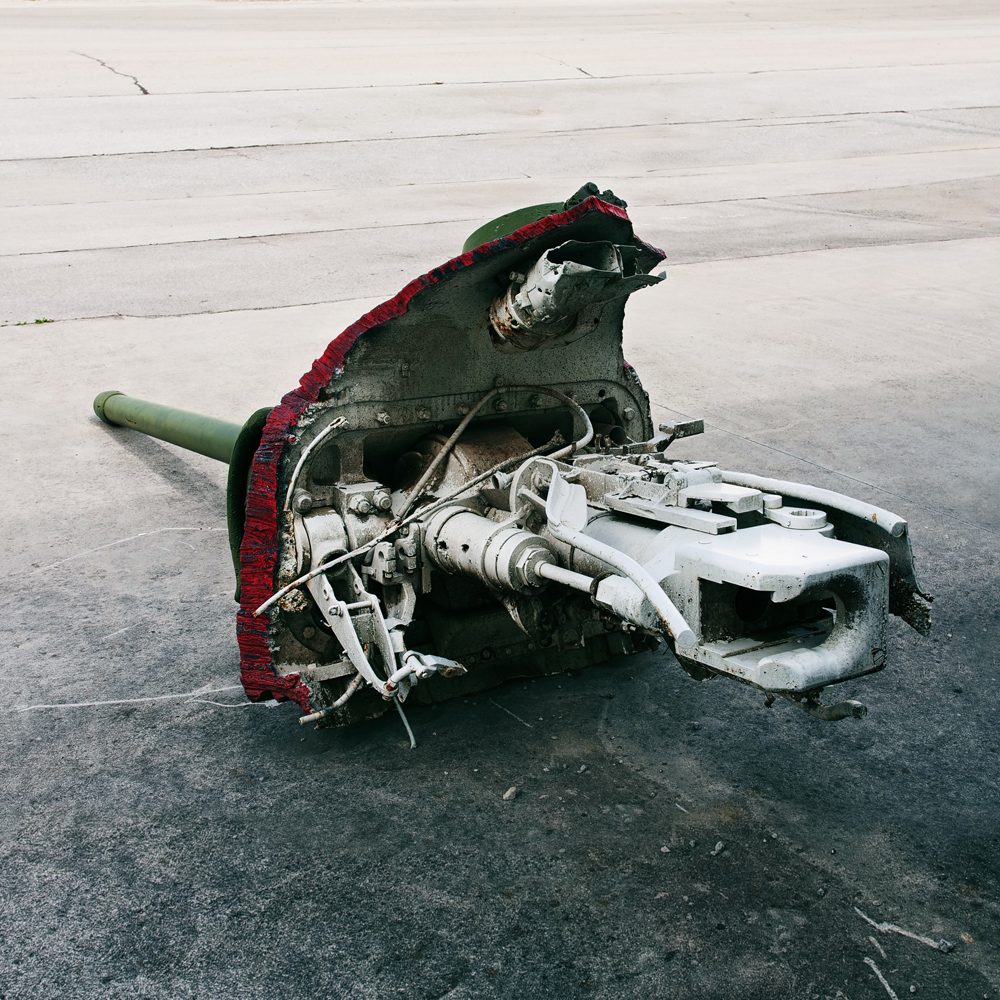Type: Self-Propelled Artillery
Nation: USA/UK/France/Italy/Germany
Period: Cold War
Location: Nationaal Militair Museum, Soesterberg, Netherlands

Arms race at a snail‘s pace
The MLRS was a joint American, British, French, Italian and West German cooperation to develop a highly mobile self-propelled artillery system for attacking a target area with large amounts of firepower. Compared to the pinpoint accuracy of gun-based artillery like the M109 or the Panzerhaubitze 2000, a massed rocket strike has a horrendous psychological impact besides the obvious physical destruction – something the Soviets had already appreciated their Katyushas for during World War 2. Throughout the 1950s and 1960s the USSR had continually been upgrading their rocket artillery, while NATO had not really bothered to develop an equivalent system until the mid-seventies. Production of the MLRS started in 1982 and the first batteries were used in action by the US Army in 1990 during Operation Desert Shield in Saudi Arabia and the following Operation Desert Storm in 1991, when they attacked Iraqi positions in Kuwait.
A nightmare on tracks
The core of the 24-ton MRLS was the hydraulically operated M269 Launcher Loader Module. It held two quickly interchangeable pods with six unguided ballistic 277 mm M26 rockets each. Every single one of these warheads was filled with 644 M77 bomblets. The MLRS could fire all twelve rockets within 60 seconds up to a range of 30 km – covering an area of one square kilometre with more than 7,000 submunition grenades. Usually three MLRS vehicles in a battery would fire all their rockets simultaneously and thereby completely obliterate the target area. A common British nickname for the MLRS was “Grid Square Removal System”, which was a play on an early designation from the vehicle‘s development phase: GSRS (General Support Rocket System). Being on the receiving end, Iraqi soldiers called it “steel rain”.

Smarter weapons for cleaner wars?
The main problem with cluster munitions was that numerous unexploded grenades would always remain on the ground and pose a lethal threat to anybody in the area for years to come – be it friendly troops on the advance or children at play. In 2008 the Convention on Cluster Munitions (CCM) banned production and deployment of most submunition types. Although the United States did not sign the treaty, they would remove their M26 rockets from active service in 2009. Later MLRS pods could be equipped with a variety of weapons, for example two guided 610 mm MGM-140 surface-to-surface missiles with a range of 300 km. Another invention for the MLRS was the creatively named Brilliant Anti-Tank (BAT) smart submunition, which would be dispersed from an air-bursting missile, deploy a small parachute, autonomously scan for high-priority targets while hanging in the air and then – guided by sound and infrared signatures – rocket down directly on their weakest points.

Many users, many names
The automotive part of the MLRS is the M993 Carrier Vehicle, which was built on the lengthened chassis of the American M2/M3 Bradley Fighting Vehicle. A powerful 500 hp V8 Cummins diesel engine enables the MLRS to quickly change positions after firing off its salvo. The crew consists of a commander, a driver and a weapons operator. The M993 is also used as a platform for other specialised vehicles. Approximately 1,300 MLRS were built and the system remains in service with numerous armies today – often in modernised form with local variations. In July 2022 the Ukrainian Forces received the first vehicles from both the US and Germany to fight the Russian invasion. The MLRS is called M270 by the US Army and MARS (Mittleres Artillerieraketensystem = medium artillery rocket system) by the German Bundeswehr. The Dutch Army operated 30 of these systems between 1988 and 2004 when they were all sold off to Finland, effectively putting an end to the entire Dutch rocket artillery branch. This particular vehicle was bought from US forces stationed in Germany to be exhibited at the incredibly large Nationaal Militair Museum in Soesterberg.


4 responses to “Multiple Launch Rocket System (MLRS)”
[…] with other western armoured vehicles such as the Flakpanzer Gepard, Panzerhaubitze 2000 and the MLRS rocket […]
LikeLike
[…] invasion – along with other western armoured vehicles such as the Flakpanzer Gepard and the MLRS rocket […]
LikeLike
[…] Ukraine for the war against the Russian invasion – along with other western equipment such as the MLRS rocket launcher and the Panzerhaubitze […]
LikeLike
[…] counter-battery fire – very similar to the modern TOS-1 Buratino and its western counterpart M270/MLRS, both of which are running on tracks. Recognising their new weapon’s significance, the Soviets […]
LikeLike